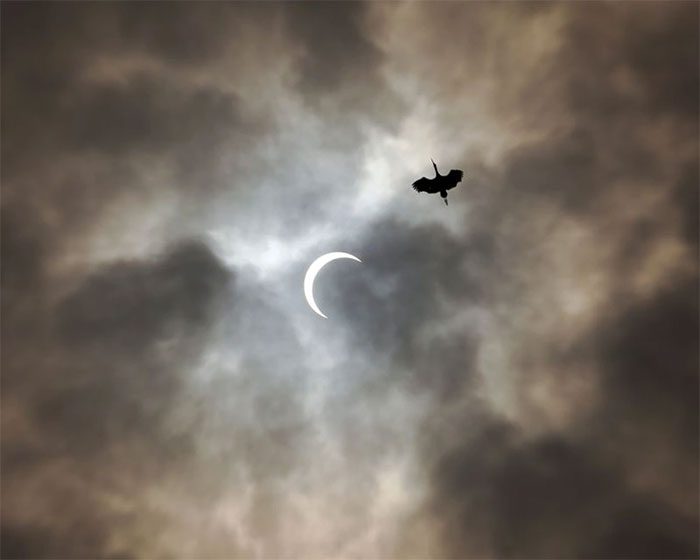When a total solar eclipse occurs, animals in many zoos exhibit strange behaviors that surprise researchers.
As millions of people across North America prepare to gaze at the sky to witness a total solar eclipse on April 8, some scientists are focused on the behavioral changes in various animal species, particularly flying ones, influenced by this natural phenomenon.

Scientists will closely monitor bird behavior as the sun gradually “disappears” during the day. (Photo: Yunus Malik/Shutterstock.com).
A team of researchers from the Cornell Laboratory of Ornithology is particularly observing birds, bats, and insects after these creatures exhibited some quite unusual behaviors during the last total solar eclipse that occurred in North America.
Andrew Farnsworth, the lead author of a study on the behavior of flying animals during the 2017 eclipse, stated: “At dusk, insects, birds, and bats will settle down to sleep or prepare for their nighttime activities. However, during the 2017 eclipse, we noticed a significant decrease in the flying activity of insects and birds, which was quite unusual as the light dimmed and the sun suddenly vanished.”
The upcoming eclipse presents an opportunity for the team to further study these unusual changes.
To achieve this, they plan to utilize weather radar stations along the path of the eclipse in the U.S. to measure aerial activities. By filtering out signals from weather phenomena, they can track the movements of flying animals—such as birds—for a brief period of 3-4 minutes.
Then, at dusk, they will remeasure their activity to compare the slightest behavioral changes during the total solar eclipse.
Only eight radar stations were installed along the path of the 2017 eclipse. The upcoming eclipse will have 13 stations, and scientists hope to gain a more comprehensive picture of the behavioral changes of flying animals in response to variations in sunlight.

Strange behaviors of birds during an eclipse may be related to their responses to light. (Photo: The Washington Post).
“It’s very difficult to manipulate light on a large scale” – Cecilia Nilsson, a behavioral ecologist and the lead researcher in 2017, remarked – “and this unique natural phenomenon is helping us set up a massive ‘experiment.’
During the most recent total solar eclipse in the U.S. in 2017, animals in many zoos exhibited a variety of strange behaviors that astonished researchers, such as: turtles suddenly swaying, giraffes gathering and running, captive baboons grooming themselves vigorously, spiders dismantling webs, some amphibians calling out unusually, and bees returning to their hives…




















































